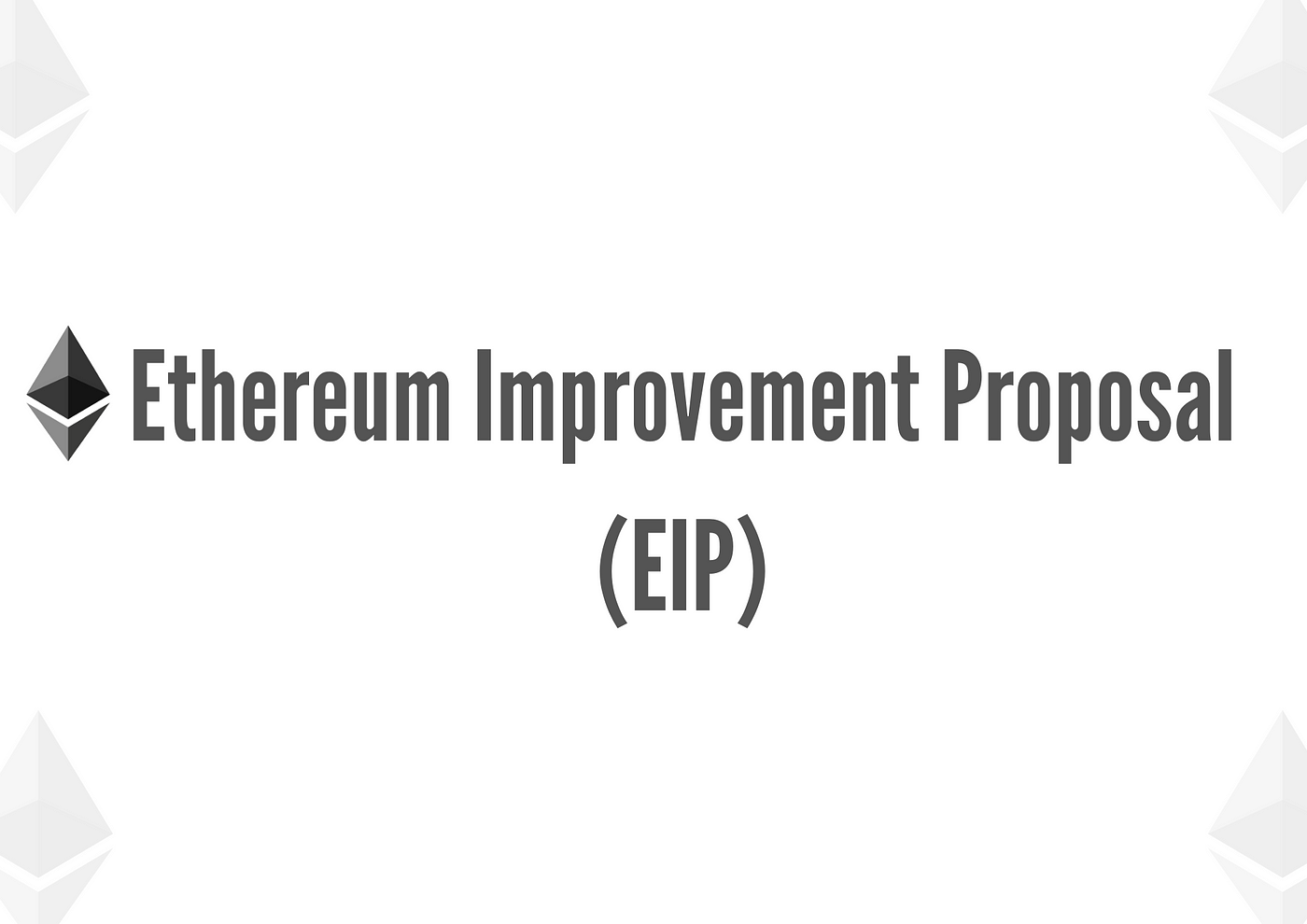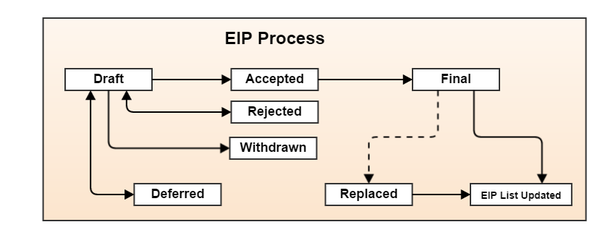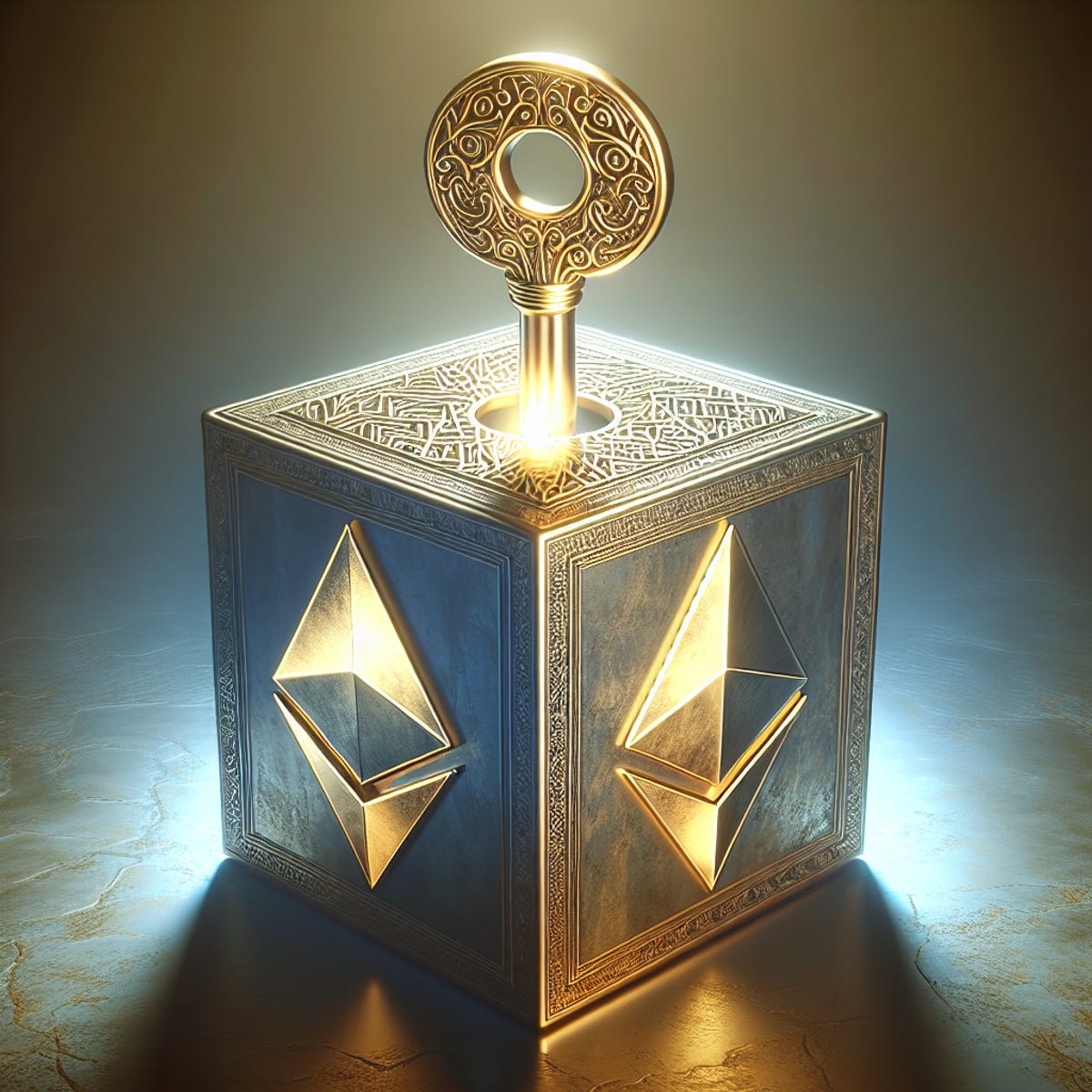1. What is an Ethereum Improvement Proposal (EIP)?

An Ethereum Improvement Proposal (EIP) is a document that outlines a new feature, specification, or change to the Ethereum blockchain. It can be proposed by anyone in the Ethereum community and is designed to improve the Ethereum network. EIPs are essential for implementing upgrades and modifications that align with the community's vision for Ethereum's future.
1.1 Key Purpose of EIPs
The main purpose of EIPs is to introduce new ideas, modifications, or bug fixes to Ethereum’s protocol. They are a formalized method of suggesting changes and ensuring that the Ethereum network evolves in a transparent, community-driven manner. Without EIPs, it would be challenging to introduce system-wide changes as the Ethereum network would lack a structured process for making decisions.
1.2 Types of EIPs
There are several types of EIPs, depending on the nature of the proposal. These include:
-
Core EIPs: Proposals that affect the core protocol of Ethereum (e.g., changes to the Ethereum Virtual Machine, consensus mechanisms, or Ethereum’s overall security).
-
Networking EIPs: Proposals related to the networking layer, such as improving how nodes communicate with each other or optimizing data storage.
-
Interface EIPs: Proposals related to the interaction layer, such as improvements to APIs or smart contract standards (e.g., ERC tokens).
-
Meta EIPs: Proposals about the process of EIP creation and management itself.
2. The EIP Process

EIPs go through a well-defined process to ensure that they are carefully reviewed, discussed, and tested before they are implemented on the Ethereum network. Here’s a breakdown of the typical stages in the EIP lifecycle:
2.1 Idea Submission
Anyone in the Ethereum community can propose an idea by submitting an EIP. This proposal outlines the idea in detail, including the rationale, potential impacts, and technical specifications. The proposal is assigned an EIP number for identification purposes.
2.2 EIP Review and Discussion
Once submitted, the EIP is reviewed by the Ethereum developer community. The review process can take time, as feedback is gathered from multiple stakeholders, including developers, miners, and users. Discussions take place on public forums and mailing lists to ensure the proposal's viability and potential consequences.
2.3 Implementation and Testing
Once the proposal gains sufficient support and approval, it enters the implementation phase. Developers work on integrating the proposed changes into the Ethereum codebase. After implementation, the new feature or change undergoes extensive testing in test networks to ensure that it doesn’t negatively impact the Ethereum network.
2.4 EIP Acceptance and Network Upgrade
If the testing phase is successful, the EIP is accepted and scheduled for a network upgrade (also known as a hard fork). The Ethereum network’s nodes are upgraded to support the new proposal, and the change is officially implemented.
3. Key Ethereum Improvement Proposals (EIPs)

Several EIPs have been pivotal in the evolution of Ethereum. Some have brought critical enhancements, while others have addressed bugs or inefficiencies in the network. Here are a few key EIPs that have had a lasting impact on Ethereum’s development:
3.1 EIP-20: The ERC-20 Token Standard
One of the most important EIPs in Ethereum’s history is EIP-20, which defines the ERC-20 token standard. This standard set the framework for creating and transferring tokens on Ethereum. ERC-20 tokens are the backbone of many decentralized applications (dApps) and have enabled the explosion of Initial Coin Offerings (ICOs) and decentralized finance (DeFi) protocols. It standardized the process of token creation and interaction, leading to widespread adoption across the blockchain space.
3.2 EIP-1559: The London Hard Fork and Fee Market Reform
EIP-1559, introduced as part of the London hard fork, was a major proposal that revamped Ethereum’s fee structure. It introduced a base fee that adjusts according to network demand, making transaction costs more predictable. Additionally, part of the transaction fee (the "burn" mechanism) is destroyed, which reduces the overall supply of ETH. This proposal addressed long-standing issues with high gas fees and helped to stabilize the network's economic model.
3.3 EIP-3675: The Merge
EIP-3675 refers to the upgrade that transitioned Ethereum from a proof-of-work (PoW) consensus mechanism to proof-of-stake (PoS), known as "The Merge." This was a landmark event in Ethereum’s history, as it drastically reduced energy consumption and laid the foundation for future scalability solutions, such as sharding. The Merge also played a role in Ethereum's long-term vision of becoming a more sustainable and eco-friendly network.
3.4 EIP-721: ERC-721 and Non-Fungible Tokens (NFTs)
EIP-721 introduced the ERC-721 token standard, which became the foundation for non-fungible tokens (NFTs). NFTs have revolutionized industries such as art, entertainment, and gaming by allowing for the creation of unique digital assets on the blockchain. This proposal laid the groundwork for a booming market of digital collectibles and creative expression.
4. The Role of the Ethereum Community in EIPs

The Ethereum community plays an integral role in the development and evolution of Ethereum Improvement Proposals. EIPs are not solely driven by the Ethereum Foundation or a small group of developers; instead, they are the product of open discussions and contributions from diverse participants across the globe. This ensures that Ethereum’s development is decentralized, transparent, and aligned with the needs of the broader ecosystem.
4.1 Open Source Contributions
Ethereum’s development is open-source, meaning anyone can contribute code or propose changes. Developers from various backgrounds—ranging from independent builders to large institutions—collaborate to improve the network. The open-source nature of Ethereum also ensures that security vulnerabilities are identified and addressed quickly by the community.
4.2 Governance and Consensus
EIPs must receive broad consensus from the Ethereum community to be adopted. Ethereum’s governance structure is unique in that it relies on community consensus rather than a central authority. While the Ethereum Foundation provides guidance, decisions are made through decentralized discussions and consensus mechanisms that reflect the interests of developers, users, and miners.
5. Challenges and Controversies Surrounding EIPs

While the EIP process is designed to be democratic, it is not without its challenges. Some of the main issues surrounding EIPs include:
5.1 Debates Over Network Upgrades
As Ethereum evolves, some proposed changes can cause contention within the community. Not all Ethereum stakeholders agree on every proposal, and disagreements over network upgrades can lead to delays or forks.
5.2 Scalability and Gas Fees
Despite the improvements brought by EIPs like EIP-1559, scalability and high gas fees remain an ongoing concern for Ethereum users. Solutions like sharding, which is being planned for Ethereum 2.0, are anticipated to address these issues, but they are still in development.
5.3 Security Risks
With the introduction of new features, there is always the risk of introducing vulnerabilities. Ensuring the security of the Ethereum network while implementing ambitious changes remains a crucial aspect of the EIP process.
6. The Future of EIPs and Ethereum's Evolution

Ethereum is constantly evolving, and as new challenges and opportunities arise, the EIP process will continue to play a central role in shaping its future. Upcoming proposals, such as those related to Ethereum 2.0, sharding, and further scalability solutions, will likely bring even more enhancements to the network.
EIPs will also continue to drive the development of new applications and standards, fueling Ethereum's dominance in the blockchain ecosystem. As Ethereum grows and matures, the flexibility and transparency provided by EIPs will remain a cornerstone of its success.
Conclusion
Ethereum Improvement Proposals are essential to Ethereum's continued success and evolution. Through an open and transparent process, the Ethereum community collaboratively proposes and implements changes that improve the network's efficiency, security, and scalability. EIPs have already played a significant role in shaping Ethereum's history, and they will continue to drive innovation in the blockchain space.
For anyone interested in understanding Ethereum's future, keeping an eye on EIPs is crucial—these proposals are the blueprint for how Ethereum will adapt to meet the ever-changing needs of the blockchain ecosystem.
Read more:

 English
English Tiếng Việt
Tiếng Việt.png)
.jpg)

.jpg)
.jpg)
.jpg)

.jpg)
.jpg)

.jpg)
.jpg)
.jpg)




